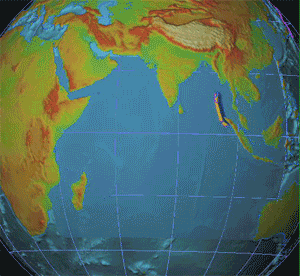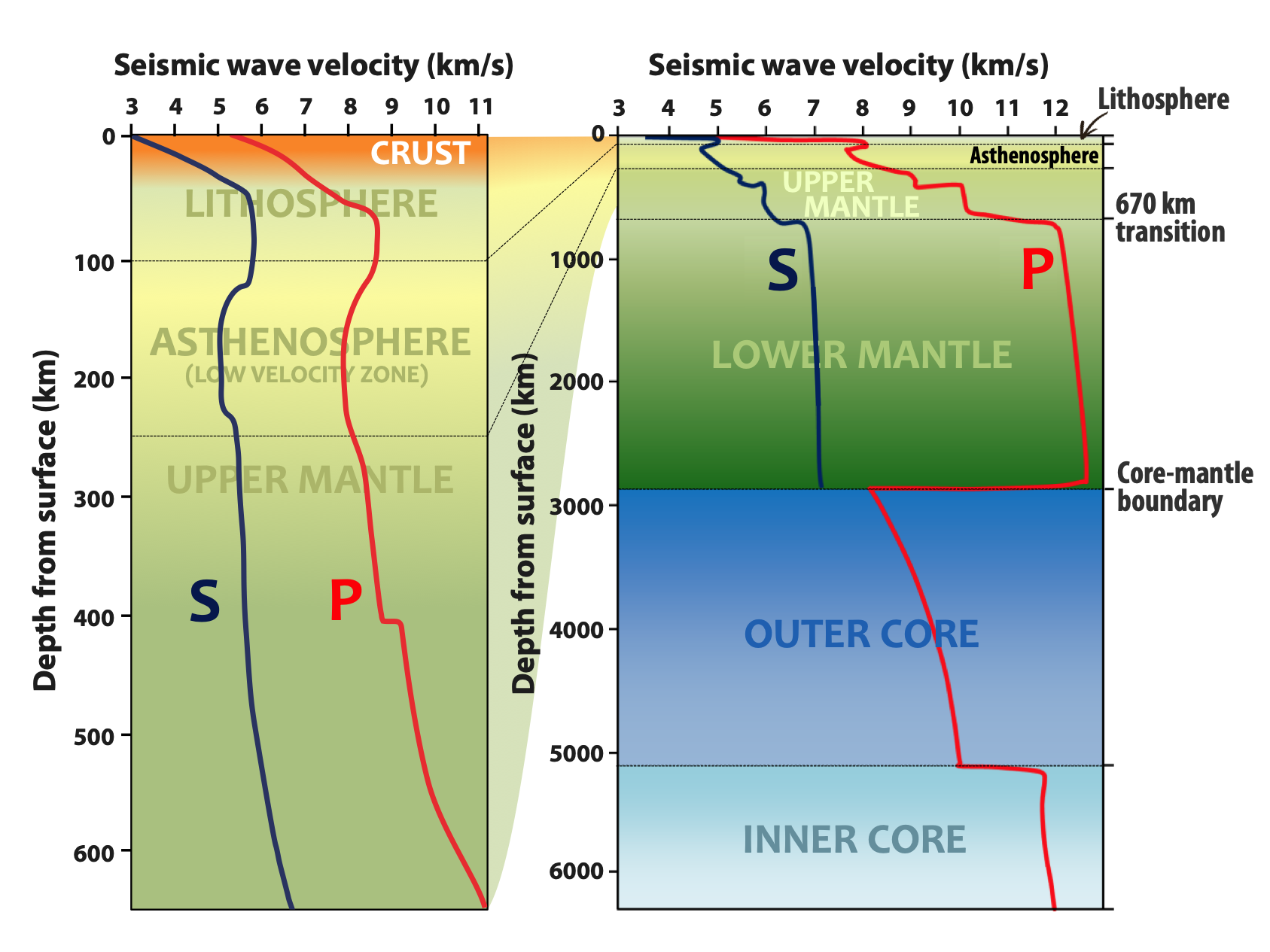|
Maurice Ewing
William Maurice "Doc" Ewing (May 12, 1906 – May 4, 1974) was an American geophysicist and oceanographer. Ewing has been described as a pioneering geophysicist who worked on the research of seismic reflection and refraction in ocean basins, ocean bottom photography, submarine sound transmission (including the SOFAR channel), deep sea core samples of the ocean bottom, theory and observation of earthquake surface waves, fluidity of the Earth's core, generation and propagation of microseisms, submarine explosion seismology, marine gravity surveys, bathymetry and sedimentation, natural radioactivity of ocean waters and sediments, study of abyssal plains and submarine canyons. Biography He was born in Lockney, Texas, where he was the eldest surviving child of a large farm family. He won a scholarship to attend Rice University, earning a BA with honors in 1926. He completed his graduate studies at the same institution, earning an MA in 1927 and being awarded his PhD ... [...More Info...] [...Related Items...] OR: [Wikipedia] [Google] [Baidu] |
Lockney, Texas
Lockney is a town in Floyd County, Texas, United States. The population was 1,498 at the 2020 census, down from 1,842 at the 2010 census. Geography Lockney is located in northwestern Floyd County at (34.122961, –101.443414). U.S. Route 70 passes through the town, leading southeast to Floydada, the county seat, and northwest to Plainview. According to the United States Census Bureau, Lockney has a total area of , all of it land. Demographics 2020 census As of the 2020 United States census, there were 1,498 people, 554 households, and 379 families residing in the town. 2000 census As of the census of 2000, there were 2,056 people, 690 households, and 540 families residing in the town. The population density was . There were 791 housing units at an average density of . The racial makeup of the town was 72.62% White, 2.53% African American, 0.24% Native American, 0.15% Asian, 0.10% Pacific Islander, 22.81% from other races, and 1.56% from two or more races. Hisp ... [...More Info...] [...Related Items...] OR: [Wikipedia] [Google] [Baidu] |
Biographical Memoirs Of Fellows Of The Royal Society
The ''Biographical Memoirs of Fellows of the Royal Society'' is an academic journal on the history of science published annually by the Royal Society. It publishes obituaries of Fellows of the Royal Society. It was established in 1932 as ''Obituary Notices of Fellows of the Royal Society'' and obtained its current title in 1955, with volume numbering restarting at 1. Prior to 1932, obituaries were published in the '' Proceedings of the Royal Society''. The memoirs are a significant historical record and most include a full bibliography of works by the subjects. The memoirs are often written by a scientist of the next generation, often one of the subject's own former students, or a close colleague. In many cases the author is also a Fellow. Notable biographies published in this journal include Albert Einstein, Alan Turing, Bertrand Russell Bertrand Arthur William Russell, 3rd Earl Russell, (18 May 1872 – 2 February 1970) was a British philosopher, logician, mathematic ... [...More Info...] [...Related Items...] OR: [Wikipedia] [Google] [Baidu] |
Sedimentation
Sedimentation is the deposition of sediments. It takes place when particles in suspension settle out of the fluid in which they are entrained and come to rest against a barrier. This is due to their motion through the fluid in response to the forces acting on them: these forces can be due to gravity, centrifugal acceleration, or electromagnetism. Settling is the falling of suspended particles through the liquid, whereas sedimentation is the final result of the settling process. In geology, sedimentation is the deposition of sediments which results in the formation of sedimentary rock. The term is broadly applied to the entire range of processes that result in the formation of sedimentary rock, from initial erosion through sediment transport and settling to the lithification of the sediments. However, the strict geological definition of sedimentation is the mechanical deposition of sediment particles from an initial suspension in air or water. Sedimentation may pertain to ... [...More Info...] [...Related Items...] OR: [Wikipedia] [Google] [Baidu] |
Bathymetry
Bathymetry (; ) is the study of underwater depth of ocean floors ('' seabed topography''), river floors, or lake floors. In other words, bathymetry is the underwater equivalent to hypsometry or topography. The first recorded evidence of water depth measurements are from Ancient Egypt over 3000 years ago. Bathymetry has various uses including the production of bathymetric charts to guide vessels and identify underwater hazards, the study of marine life near the floor of water bodies, coastline analysis and ocean dynamics, including predicting currents and tides. Bathymetric charts (not to be confused with '' hydrographic charts''), are typically produced to support safety of surface or sub-surface navigation, and usually show seafloor relief or terrain as contour lines (called '' depth contours'' or '' isobaths'') and selected depths ('' soundings''), and typically also provide surface navigational information. Bathymetric maps (a more general term where navigational safet ... [...More Info...] [...Related Items...] OR: [Wikipedia] [Google] [Baidu] |
Reflection Seismology
Reflection seismology (or seismic reflection) is a method of exploration geophysics that uses the principles of seismology to estimate the properties of the Earth's subsurface from reflection (physics), reflected seismic waves. The method requires a controlled seismic source of energy, such as dynamite or Tovex blast, a specialized Seismic source#Air gun, air gun or a seismic vibrator. Reflection seismology is similar to sonar and acoustic location, echolocation. History Reflections and refractions of seismic waves at geologic Interface (matter), interfaces within the Earth were first observed on recordings of earthquake-generated seismic waves. The basic model of the Earth's deep interior is based on observations of earthquake-generated seismic waves transmitted through the Earth's interior (e.g., Mohorovičić, 1910). The use of human-generated seismic waves to map in detail the geology of the upper few kilometers of the Earth's crust followed shortly thereafter and has deve ... [...More Info...] [...Related Items...] OR: [Wikipedia] [Google] [Baidu] |
Seismology
Seismology (; from Ancient Greek σεισμός (''seismós'') meaning "earthquake" and -λογία (''-logía'') meaning "study of") is the scientific study of earthquakes (or generally, quakes) and the generation and propagation of elastic waves through planetary bodies. It also includes studies of the environmental effects of earthquakes such as tsunamis; other seismic sources such as volcanoes, plate tectonics, glaciers, rivers, oceanic microseisms, and the atmosphere; and artificial processes such as explosions. Paleoseismology is a related field that uses geology to infer information regarding past earthquakes. A recording of Earth's motion as a function of time, created by a seismograph is called a seismogram. A seismologist is a scientist who works in basic or applied seismology. History Scholarly interest in earthquakes can be traced back to antiquity. Early speculations on the natural causes of earthquakes were included in the writings of Thales of Miletu ... [...More Info...] [...Related Items...] OR: [Wikipedia] [Google] [Baidu] |
Seismic Wave
A seismic wave is a mechanical wave of acoustic energy that travels through the Earth or another planetary body. It can result from an earthquake (or generally, a quake), volcanic eruption, magma movement, a large landslide and a large man-made explosion that produces low-frequency acoustic energy. Seismic waves are studied by seismologists, who record the waves using seismometers, hydrophones (in water), or accelerometers. Seismic waves are distinguished from seismic noise (ambient vibration), which is persistent low-amplitude vibration arising from a variety of natural and anthropogenic sources. The propagation velocity of a seismic wave depends on density and elasticity of the medium as well as the type of wave. Velocity tends to increase with depth through Earth's crust and mantle, but drops sharply going from the mantle to Earth's outer core. Earthquakes create distinct types of waves with different velocities. When recorded by a seismic observatory, their ... [...More Info...] [...Related Items...] OR: [Wikipedia] [Google] [Baidu] |
Core Sample
A core sample is a cylindrical section of (usually) a naturally-occurring substance. Most core samples are obtained by drilling with special drills into the substance, such as sediment or rock, with a hollow steel tube, called a core drill. The hole made for the core sample is called the "core hole". A variety of core samplers exist to sample different media under different conditions; there is continuing development in the technology. In the coring process, the sample is pushed more or less intact into the tube. Removed from the tube in the laboratory, it is inspected and analyzed by different techniques and equipment depending on the type of data desired. Core samples can be taken to test the properties of manmade materials, such as concrete, ceramics, some metals and alloys, especially the softer ones. Core samples can also be taken of living things, including human beings, especially of a person's bones for microscopic examination to help diagnose diseases. Methods The ... [...More Info...] [...Related Items...] OR: [Wikipedia] [Google] [Baidu] |
SOFAR Channel
The SOFAR channel (short for sound fixing and ranging channel), or deep sound channel (DSC), is a horizontal layer of water in the ocean at which depth the speed of sound is at its minimum. The SOFAR channel acts as a waveguide for sound, and low frequency sound waves within the channel may travel thousands of miles before dissipating. An example was reception of coded signals generated by the US Navy-chartered ocean surveillance vessel ''Cory Chouest'' off Heard Island, located in the southern Indian Ocean (between Africa, Australia and Antarctica), by hydrophones in portions of all five major ocean basins and as distant as the North Atlantic and North Pacific.Figure 1 of the referenc"The Heard Island Feasibility Test"(Munk) shows ray paths to receiving locations. Table 1 lists the sites with one being a Canadian research vessel with a towed array off Cape Cod. This phenomenon is an important factor in ocean surveillance. The deep sound channel was discovered and described ind ... [...More Info...] [...Related Items...] OR: [Wikipedia] [Google] [Baidu] |
Underwater Acoustics
Underwater acoustics (also known as hydroacoustics) is the study of the propagation of sound in water and the interaction of the mechanical waves that constitute sound with the water, its contents and its boundaries. The water may be in the ocean, a lake, a river or a tank. Typical frequencies associated with underwater acoustics are between 10 Hz and 1 MHz. The propagation of sound in the ocean at frequencies lower than 10 Hz is usually not possible without penetrating deep into the seabed, whereas frequencies above 1 MHz are rarely used because they are absorbed very quickly. Hydroacoustics, using sonar technology, is most commonly used for monitoring of underwater physical and biological characteristics. Hydroacoustics can be used to detect the depth of a water body ( bathymetry), as well as the presence or absence, abundance, distribution, size, and behavior of underwater plants and animals. Hydroacoustic sensing involves " passive acoustics" (listening for soun ... [...More Info...] [...Related Items...] OR: [Wikipedia] [Google] [Baidu] |
Refraction
In physics, refraction is the redirection of a wave as it passes from one transmission medium, medium to another. The redirection can be caused by the wave's change in speed or by a change in the medium. Refraction of light is the most commonly observed phenomenon, but other waves such as sound waves and Wind wave, water waves also experience refraction. How much a wave is refracted is determined by the change in wave speed and the initial direction of wave propagation relative to the direction of change in speed. Optical Prism (optics), prisms and Lens (optics), lenses use refraction to redirect light, as does the human eye. The refractive index of materials varies with the wavelength of light,R. Paschotta, article ochromatic dispersion in th, accessed on 2014-09-08 and thus the angle of the refraction also varies correspondingly. This is called dispersion (optics), dispersion and causes prism (optics), prisms and rainbows to divide white light into its constituent spectral ... [...More Info...] [...Related Items...] OR: [Wikipedia] [Google] [Baidu] |
Reflection Seismology
Reflection seismology (or seismic reflection) is a method of exploration geophysics that uses the principles of seismology to estimate the properties of the Earth's subsurface from reflection (physics), reflected seismic waves. The method requires a controlled seismic source of energy, such as dynamite or Tovex blast, a specialized Seismic source#Air gun, air gun or a seismic vibrator. Reflection seismology is similar to sonar and acoustic location, echolocation. History Reflections and refractions of seismic waves at geologic Interface (matter), interfaces within the Earth were first observed on recordings of earthquake-generated seismic waves. The basic model of the Earth's deep interior is based on observations of earthquake-generated seismic waves transmitted through the Earth's interior (e.g., Mohorovičić, 1910). The use of human-generated seismic waves to map in detail the geology of the upper few kilometers of the Earth's crust followed shortly thereafter and has deve ... [...More Info...] [...Related Items...] OR: [Wikipedia] [Google] [Baidu] |









